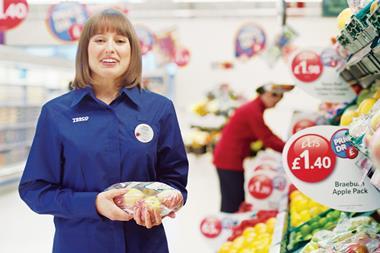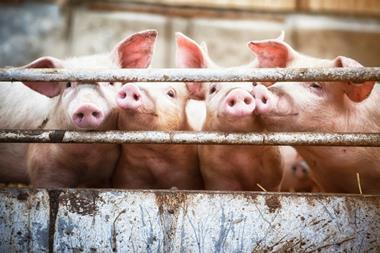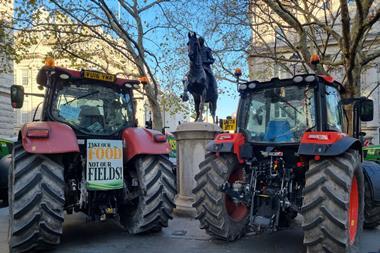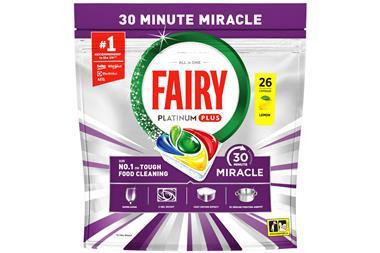Tesco looks set to see strong sales growth in the north-west when its Extra store opens in Portwood, Stockport.
Despite having an impact on five existing Tesco stores, the 101,500 sq ft store should return a net sales increase to the group of £1.5m a week.
A big share of the new store’s expenditure will come at the expense of Tesco’s three main rivals. Both Asda and Sainsbury look set to lose a similar level of trade, with Sainsbury suffering an impact in five stores compared with Asda’s three larger stores.
The combined impact on Morrisons and Safeway is almost the same level, at £375,000 a week across four stores. To the best of our knowledge Morrisons is able to continue to trade from all four of these stores.
The predicted catchment is not surprisingly expansive, given the size of the store and its proximity to major roads.
The catchment is predicted to extend south-east because the speedy A626 road adjoins the site. Additionally, the size of the store and wide product offering are likely to pull sizeable numbers of shoppers from the south and north-west of Stockport where the competition is weak.
The catchment tails off in the wealthy band to the west of Stockport, which is already strongly served by a string of Tesco and Sainsbury stores. To the north, the catchment is rapidly impacted by a raft of large competing stores and the slower drive-times as we head into Manchester.
The ACORN profile of the catchment is representative of Britain as a whole. The dominant group is ‘Secure Families’ which is the largest ACORN group in Britain, making up about 14% of households and 20% of households in the Stockport catchment. This group is followed by ‘Struggling Families’, represented in the catchment in a similar proportion to the national average, and ‘Blue Collar Roots’, which is over-represented in the catchment.
Given the profile, it is not surprising the catchment has a good fit to the typical demographics of Britain’s number one retailer,although it misses out slightly among ‘Blue Collar Roots’ who are more attracted by Asda and Morrisons. While these two retailers have a slightly better fit to the overall catchment profile than Tesco, all three are strong. It is, therefore, likely that the depth of offer, convenience and quality of experience will dictate where people will shop in this location rather than any major brand loyalty factor.
Sainsbury also has a strong fit to the demographics.
Tesco is predicted to take a 38% share of the expenditure - putting clear water between it and nearest local rivals Sainsbury and Asda.
Despite having an impact on five existing Tesco stores, the 101,500 sq ft store should return a net sales increase to the group of £1.5m a week.
A big share of the new store’s expenditure will come at the expense of Tesco’s three main rivals. Both Asda and Sainsbury look set to lose a similar level of trade, with Sainsbury suffering an impact in five stores compared with Asda’s three larger stores.
The combined impact on Morrisons and Safeway is almost the same level, at £375,000 a week across four stores. To the best of our knowledge Morrisons is able to continue to trade from all four of these stores.
The predicted catchment is not surprisingly expansive, given the size of the store and its proximity to major roads.
The catchment is predicted to extend south-east because the speedy A626 road adjoins the site. Additionally, the size of the store and wide product offering are likely to pull sizeable numbers of shoppers from the south and north-west of Stockport where the competition is weak.
The catchment tails off in the wealthy band to the west of Stockport, which is already strongly served by a string of Tesco and Sainsbury stores. To the north, the catchment is rapidly impacted by a raft of large competing stores and the slower drive-times as we head into Manchester.
The ACORN profile of the catchment is representative of Britain as a whole. The dominant group is ‘Secure Families’ which is the largest ACORN group in Britain, making up about 14% of households and 20% of households in the Stockport catchment. This group is followed by ‘Struggling Families’, represented in the catchment in a similar proportion to the national average, and ‘Blue Collar Roots’, which is over-represented in the catchment.
Given the profile, it is not surprising the catchment has a good fit to the typical demographics of Britain’s number one retailer,although it misses out slightly among ‘Blue Collar Roots’ who are more attracted by Asda and Morrisons. While these two retailers have a slightly better fit to the overall catchment profile than Tesco, all three are strong. It is, therefore, likely that the depth of offer, convenience and quality of experience will dictate where people will shop in this location rather than any major brand loyalty factor.
Sainsbury also has a strong fit to the demographics.
Tesco is predicted to take a 38% share of the expenditure - putting clear water between it and nearest local rivals Sainsbury and Asda.



















No comments yet